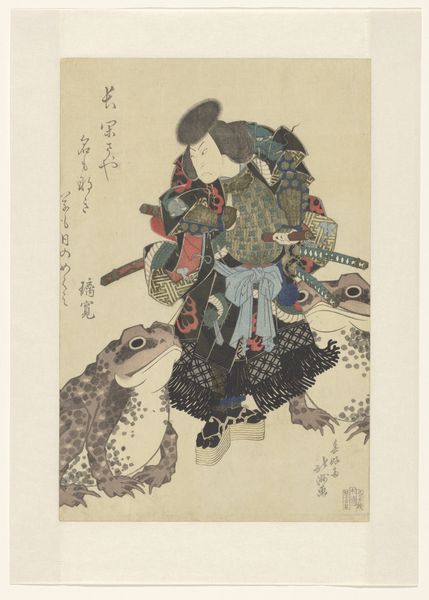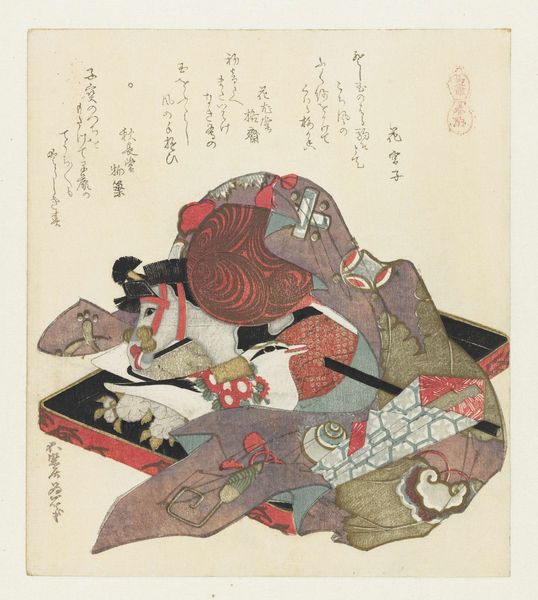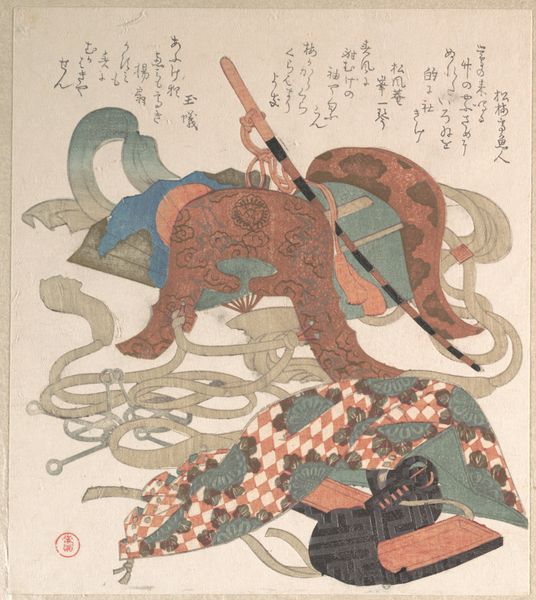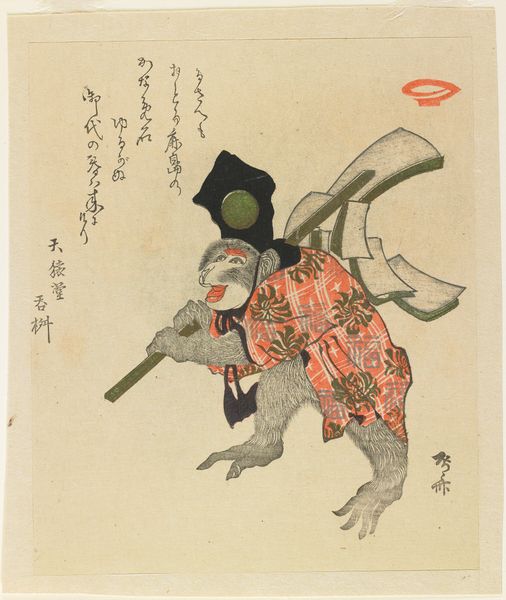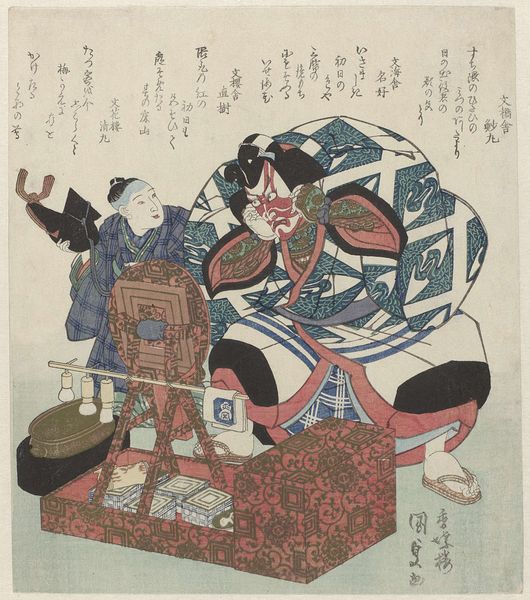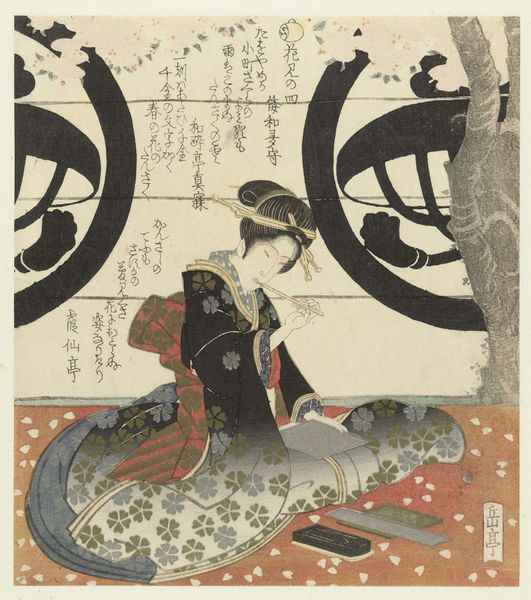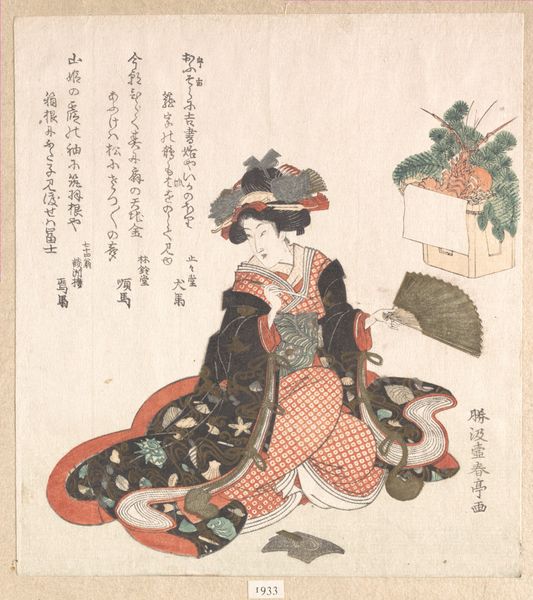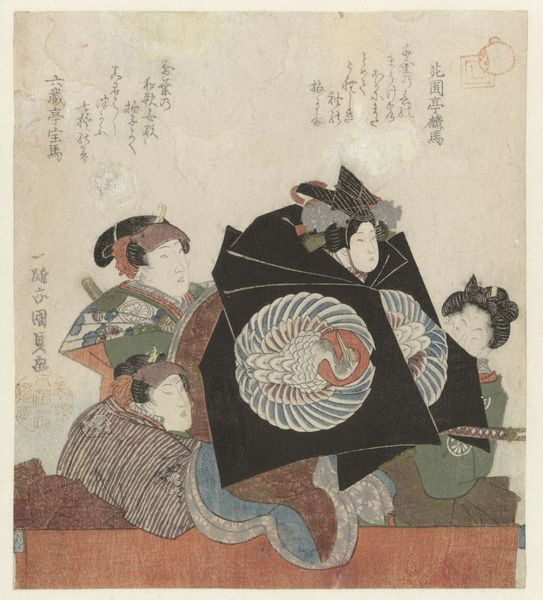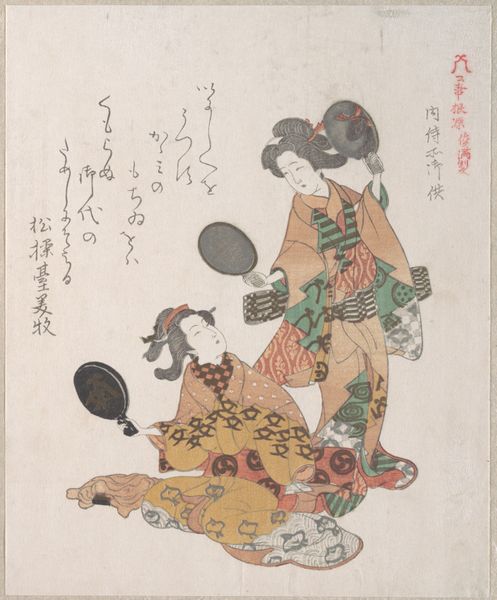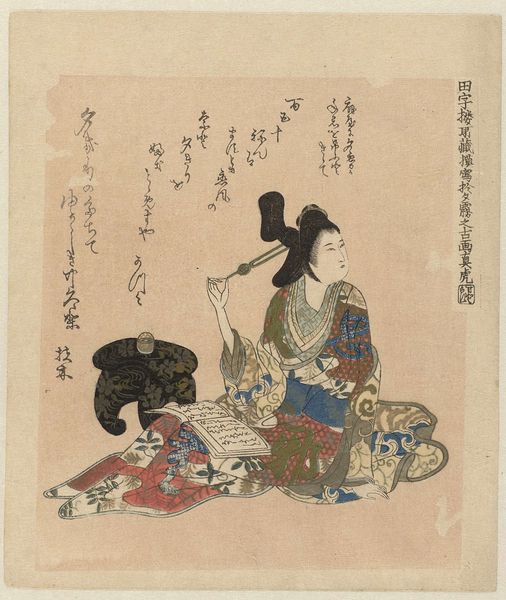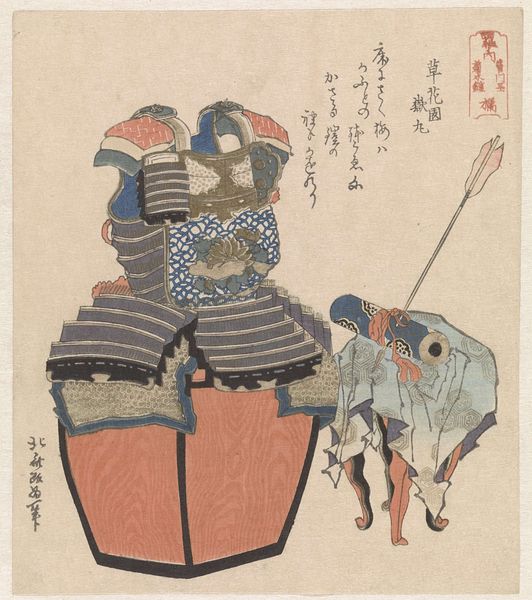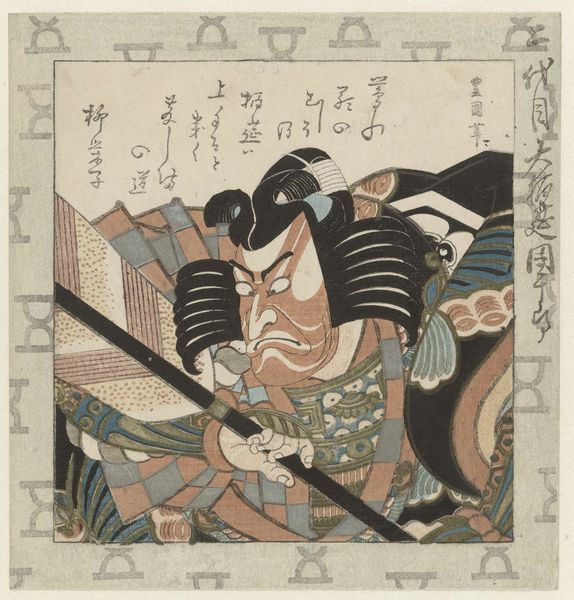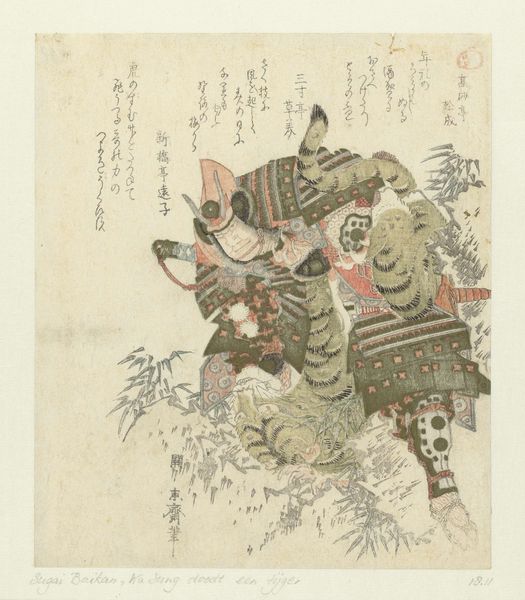
print, woodblock-print
#
portrait
# print
#
asian-art
#
ukiyo-e
#
figuration
#
woodblock-print
#
watercolour illustration
#
watercolor
Dimensions: height 397 mm, width 267 mm
Copyright: Rijks Museum: Open Domain
Editor: This intriguing print, "Arashi Rikan II in een kabuki uitvoering," made by Shunkōsai Hokushū around 1830-1832, depicts a kabuki actor with these surprisingly detailed frogs. It is incredibly detailed and colorful, for a woodblock print. What particularly strikes me is the intense gaze of the actor. How do you read this image? Curator: Looking at this, I am immediately drawn to the materials and production. The woodblock print technique itself—think of the labour involved in carving those blocks! The very specific registration needed to get those intense colors perfectly aligned shows not only mastery, but an entire workshop contributing to the finished piece. And the choice to depict a Kabuki actor is not accidental. Kabuki itself, like Ukiyo-e prints, was very much tied to the emerging consumer culture and was the art of the merchant classes. Notice also how the textures—the fabric of the costume, the skin of the frog—are carefully rendered, suggesting the artist's and artisans' understanding of, and engagement with, the material world. It's fascinating to consider this work within that framework, isn't it? Editor: Absolutely, I hadn't considered the socio-economic context in such a direct way. How would the average person at the time consumed the print? Curator: Exactly. These prints weren’t high art. They were commodities. Imagine them being sold alongside playbills or used as advertising. Consider the availability and disposability; these prints would've had a tangible and perhaps even utilitarian value. It prompts us to reconsider our traditional understanding of "art" as separate from the everyday material conditions of life. Editor: That perspective really shifts how I see this print. I was focused on the aesthetic, but you've illuminated how deeply rooted it is in its creation, culture, and economic ecosystem. Curator: And that interconnectedness, I think, is crucial to truly understand the work's lasting impact and meaning. There is such value and beauty when these disciplines mix.
Comments
No comments
Be the first to comment and join the conversation on the ultimate creative platform.
